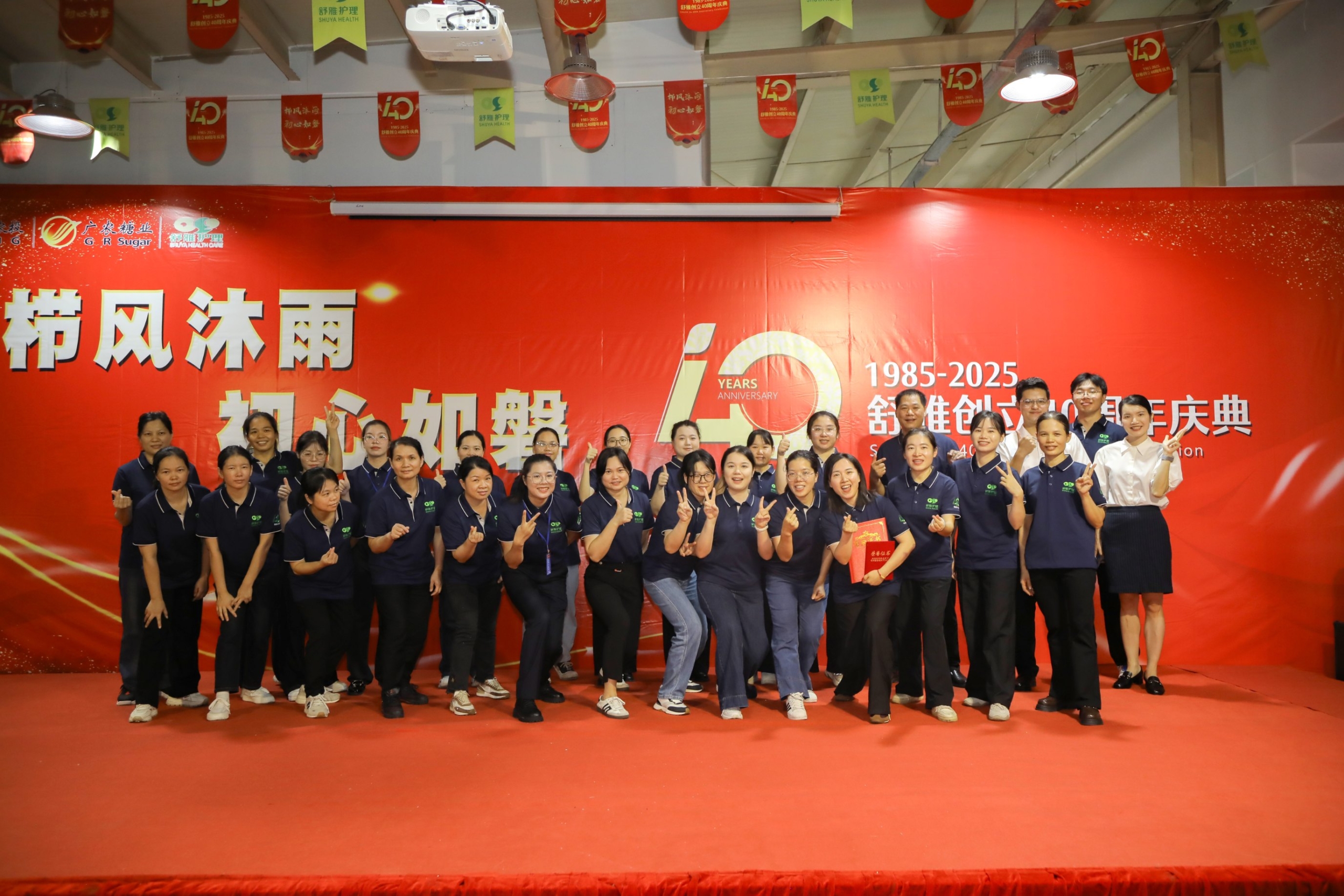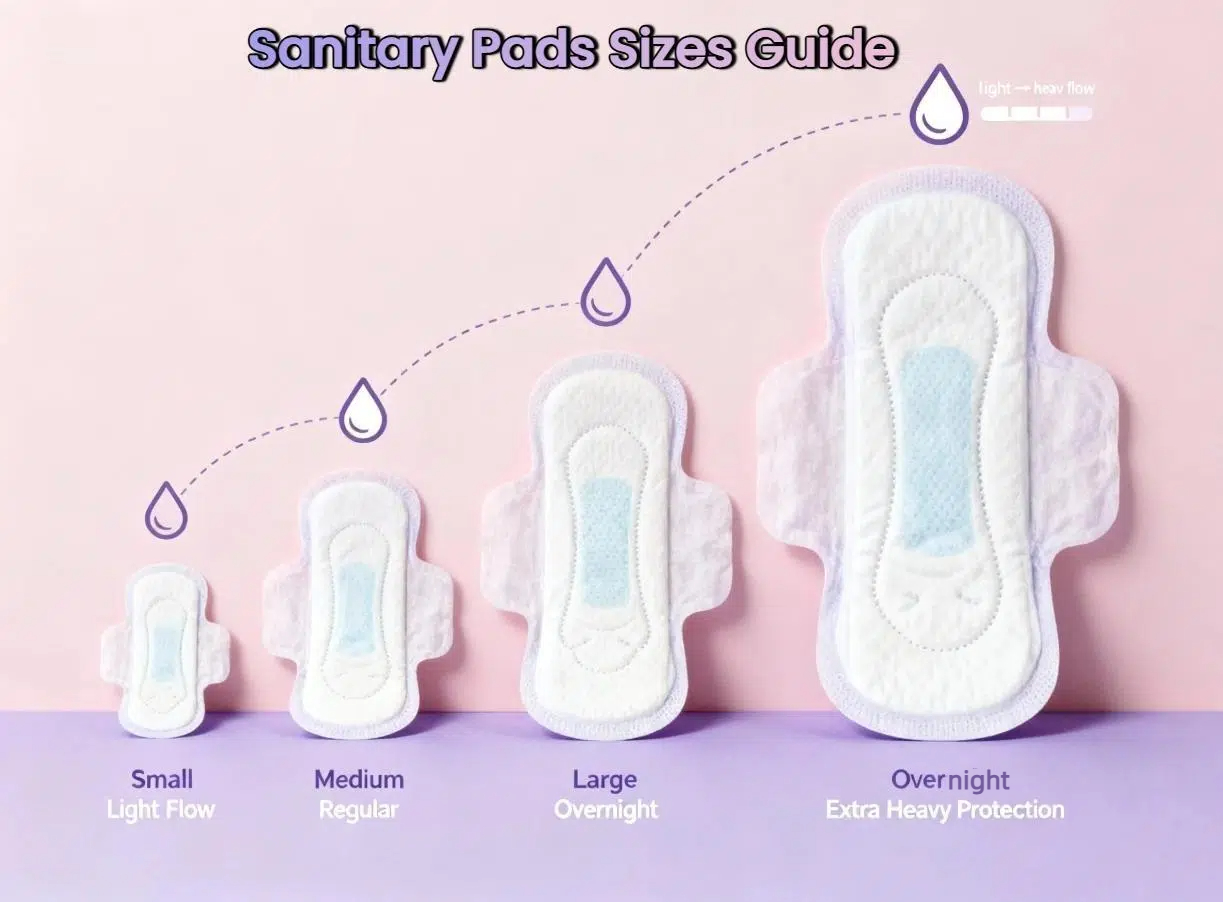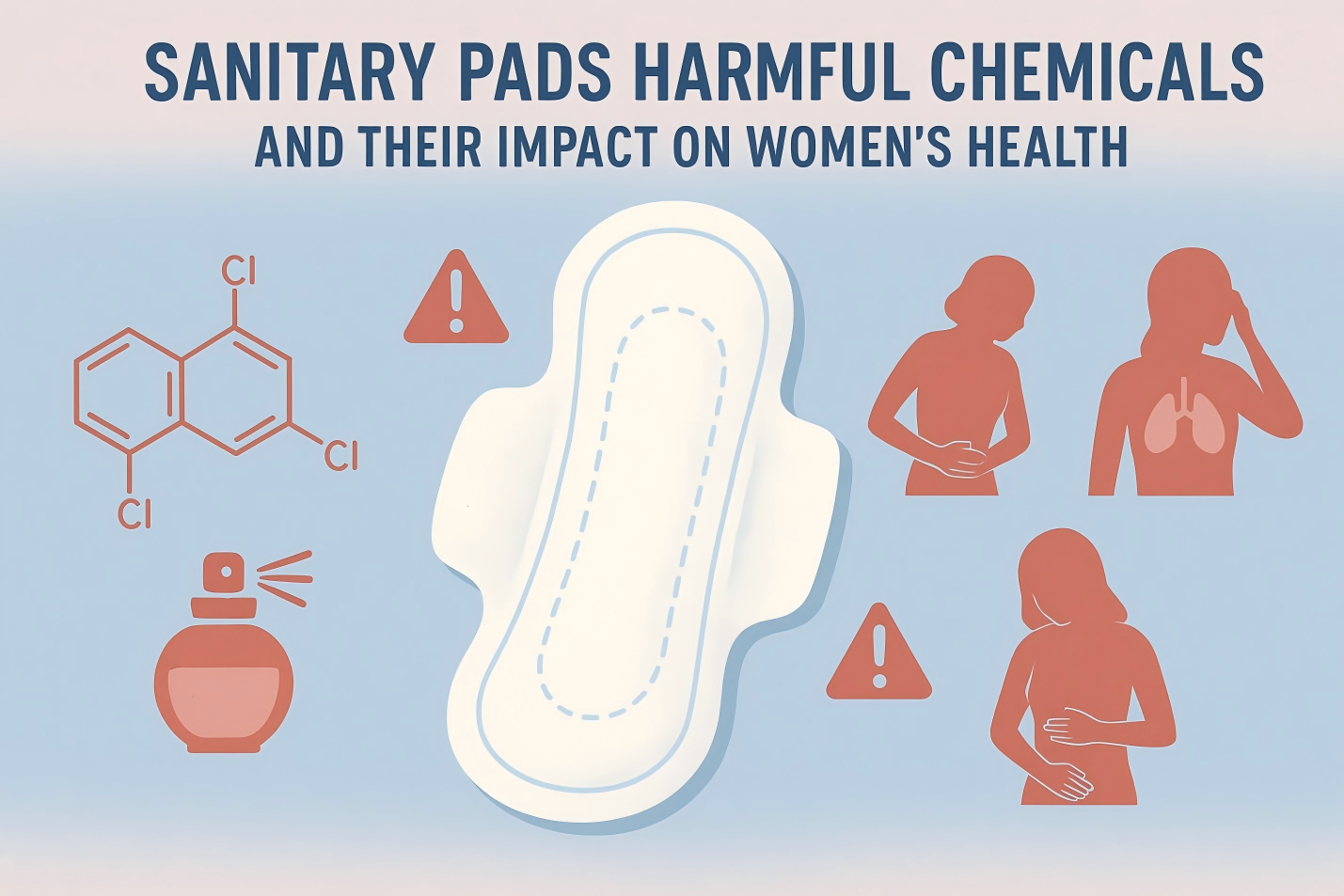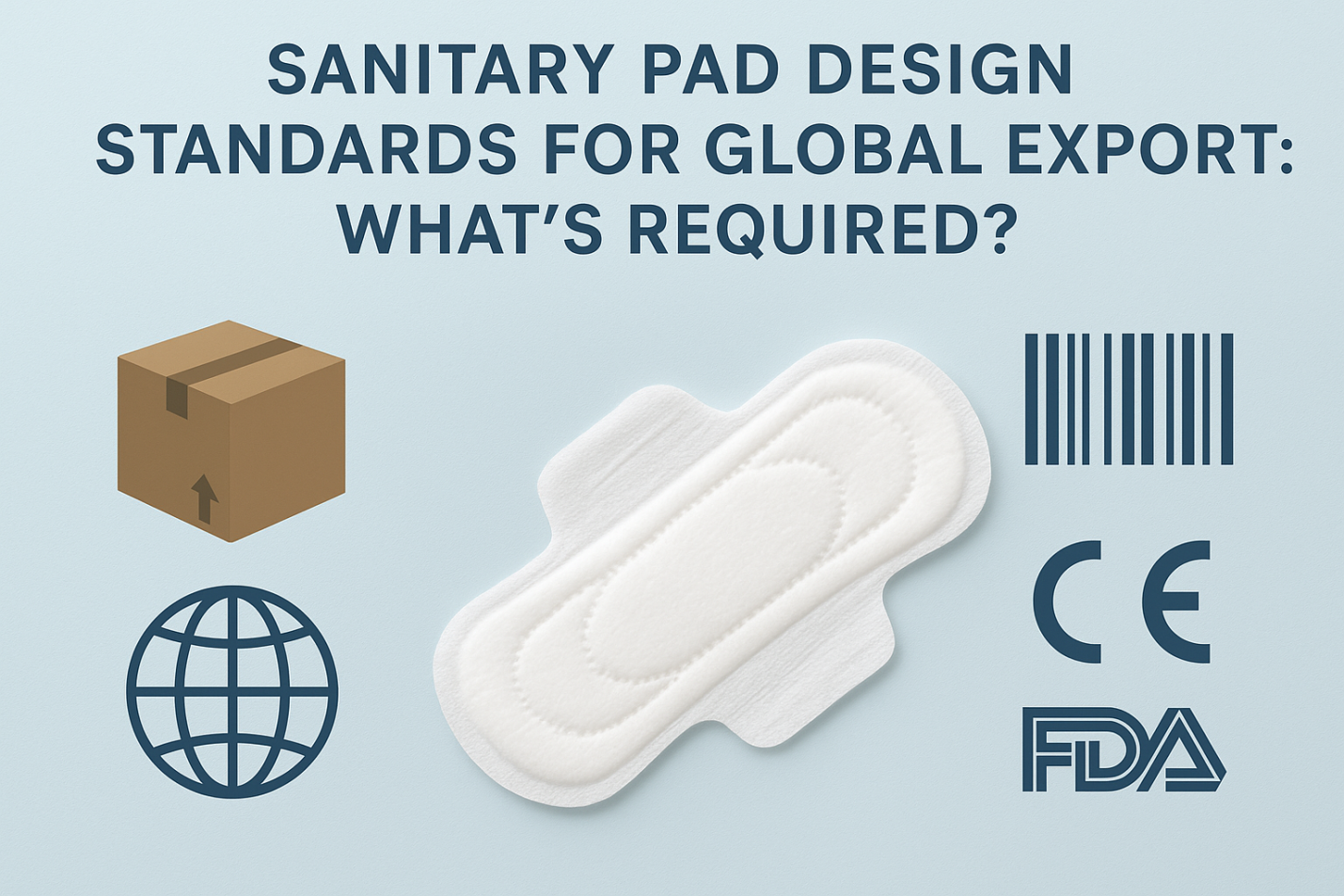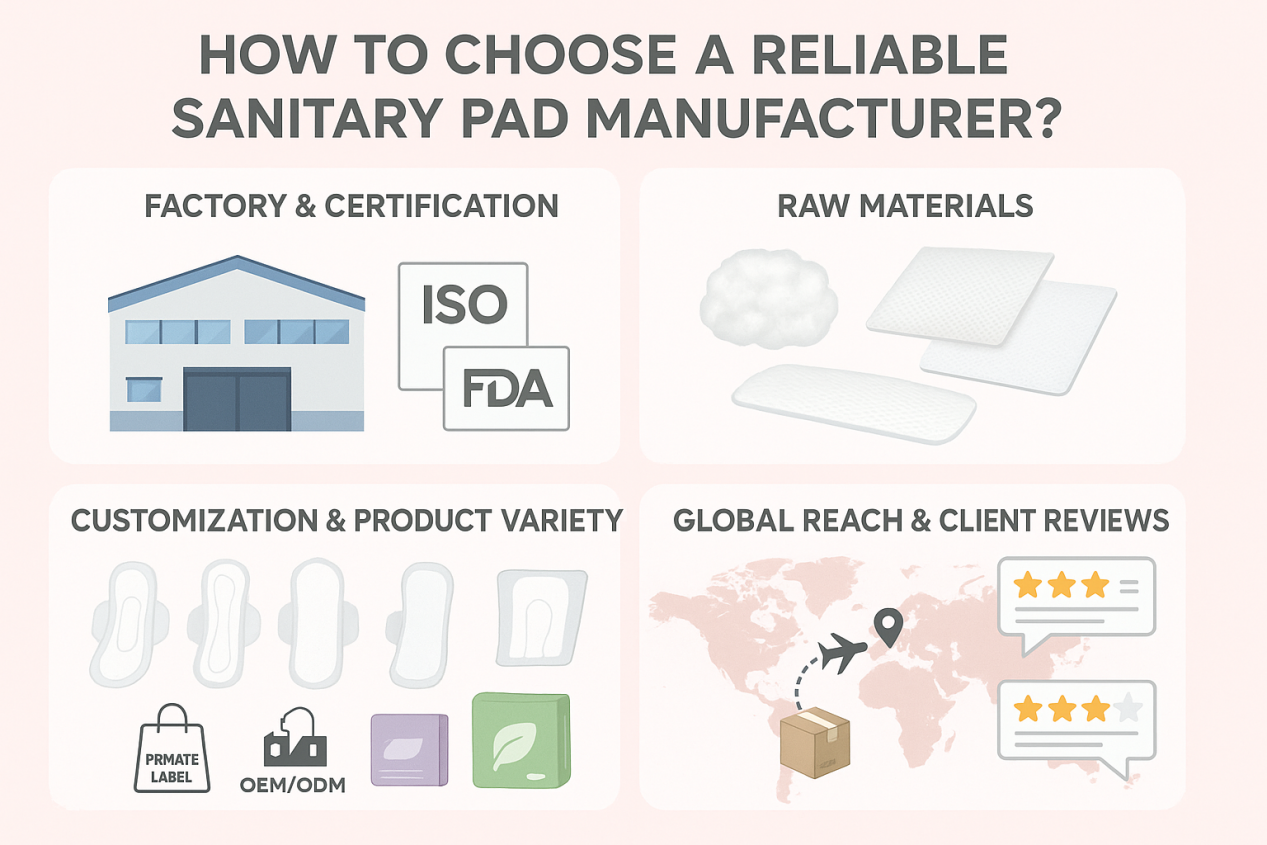Periods sometimes bring unexpected situations, which is why modern women’s demands for the best feminine pads are no longer limited to basic functions. Instead, there is a growing pursuit of good quality sanitary pads that prioritize safety, comfort, and convenience.
A poor choice can lead to discomfort, leaks, and a loss of trust. For agents, this translates directly into customer complaints and lost revenue. So, how do you find truly good quality sanitary pads that meet these high expectations?
Read on to learn more.
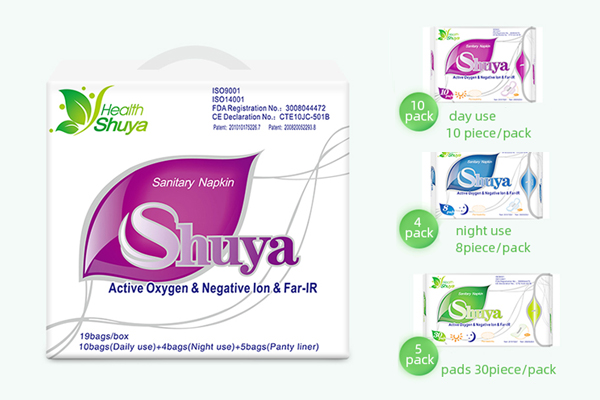
How to Identify Good Quality Sanitary Pads? A Step-by-Step Guide
Selecting the best quality sanitary pads is not about fancy marketing. What details must be paid attention to?
1. External Packaging & Material
The packaging of good sanitary pads conveys a wealth of information:
- Sealing:A pack of sanitary napkins contains several pads. After opening, a resealable sticker effectively isolates external contaminants, maintaining the cleanliness and hygiene of the pads. If it has a one-time opening, it is more susceptible to contamination and may pose health risks.
- Printing:Observe the clarity of the printing. Is the text legible? Packaging without ghosting, blurring, or missing prints reflects the producer’s high level of craftsmanship and attention to detail.
- Information Label:High-quality products feature clear ingredient lists, complete production information, well-defined execution standards, and detailed usage instructions, indicating compliant production standards.
Overall, good quality sanitary pads enhance the product’s perceived value and your brand image, winning consumer favor.
2. Material & Internal Structure
Next, it is crucial to unwrap a single sanitary pad and conduct a detailed inspection of its texture and structure, which includes:
- Pure and White Appearance:The material should exhibit a natural, fiber-inherent white color, with even coloration and no yellow spots, black dots, or other impurities. A dull, uneven color or impurities may indicate the use of recycled materials or insufficiently sterilized raw materials.
- Top Sheet:The top layer is in direct and prolonged contact with the skin. Its texture should be comfortable and smooth, with no roughness or irritation. A high-quality top layer also allows for instant liquid penetration to the lower layers, keeping the skin dry.
- Absorption Core:After pouring liquid, it should be absorbed quickly. When pressed with a paper, the surface should remain dry and free of hard lumps, indicating good absorption.
- Back Sheet:It should prevent leakage while remaining breathable, maintaining a healthy environment for the skin.
- Wing Position and Size:The wings should be appropriately sized and well-positioned to perfectly wrap around the bottom of the underwear. This effectively prevents side leakage.
- Adhesive Quality:The adhesive on the back should have sufficient stickiness to prevent the sanitary napkin from shifting or twisting, yet should not be difficult to remove.
- Release Paper:The release paper is to protect the adhesive. It should be durable, easy to remove, and should not tear. This small detail significantly impacts the user experience and should not be overlooked.
Most manufacturers are willing to provide samples for inspecting these details, as each one directly affects women’s health and comfort.
3. Core Functions
Merely observing the material and structure is not enough. Simple tests can show you which sanitary napkin is good functionally.
- Absorbency Test:
- Take a piece of a sanitary pad, remove the release paper, and lay it flat on a smooth plate or bowl (to simulate the curve).
- Prepare a cup of about 50ml of warm water (a few drops of blue ink or soy sauce can be added for better observation).
- Pour the water onto the sanitary pad quickly within 2-3 seconds.
For good quality sanitary pads, the liquid should be absorbed instantly upon contact with the top layer, and the surface should remain smooth and even after absorption.
- Anti-leakback Test:
- After pouring the liquid, wait about 20 seconds.
- Press a dry paper against the wet surface of the sanitary napkin with moderate pressure. Hold for 3-5 seconds.
- Lift the paper towel and observe its moisture level.
If almost no watermarks or only minimal moisture is visible, it indicates that the superabsorbent polymer has effectively locked in the moisture, demonstrating good anti-leakback performance.
- Breathability Test:
- Prepare a cup of hot water, an empty glass, and a sanitary pad.
- Place the sanitary pad with the adhesive side facing up, covering the cup of hot water, and secure it with a strap.
- Invert the empty glass and place it on the back sheet of the sanitary napkin. Let it sit for 1-2 minutes and observe.
If mist or tiny water droplets appear on the inner wall of the inverted empty glass, it proves that water vapor has passed through the back sheet, indicating that the sanitary napkin has good breathability.
4. Safety
Lastly, it is essential to verify the safety of sanitary napkins, which includes:
- Fluorescent Brightener-Free:Fluorescent brighteners are synthetic chemical dyes that can make cotton or non-woven fabrics appear whiter. However, they may transfer from the product to the skin through friction and the warm, moist environment, causing allergies or other issues. They should not be used in good quality sanitary pads.
- Hygiene and Safety Standards:Especially for agents planning to sell in different markets, it is also necessary to check whether the sanitary napkins comply with various international standards, such as the EU’s CE certification and the U.S. FDA certification.
These ensure the product’s regulatory compliance.
Identifying Common Manufacturing Defects
- The individual wrapping of sanitary pads has issues such as unsealed edges, incomplete sealing, or overly shallow seals.
- The adhesive strip on the back of the sanitary napkin may be misaligned, skewed, or the strip itself may be broken, wrinkled, or partially missing.
- The absorption layer may be misaligned during the pressing process, failing to remain centered.
- Foreign objects may be found on the sanitary napkin, including but not limited to black spots, yellow stains, fiber clusters, metal debris, insects, or hair.
For agents, rigorous inspection is not only about controlling product quality but also about safeguarding brand reputation and avoiding customer complaints and return risks.
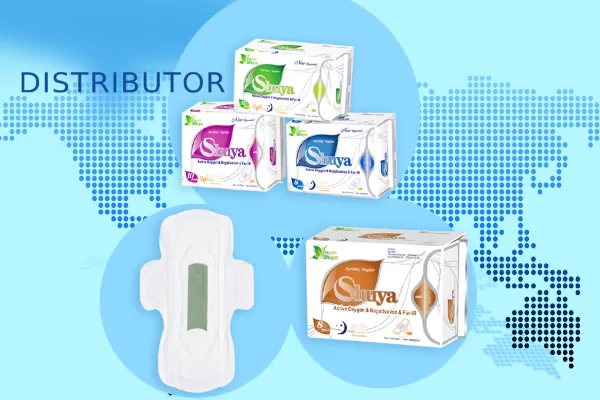
Good Quality Sanitary Pads from Shuya
Are you searching for an OEM/ODM manufacturer of the best feminine pads? Finding a partner that consistently meets all these criteria can be a hassle. This is where Shuya stands out.
Shuya has 40 years of experience in feminine hygiene products, with a product range covering sanitary napkins, panty liners, and other hygiene items. Certified to international standards such as ISO, CE, FDA, and SGS, our products comply with global quality benchmarks, including ISO 9001, ISO 14001, and ISO 45001.
We offer OEM/ODM services, enabling you to establish and develop your own brand with customized logos. The process includes: requirement analysis, identifying defects & resolving bugs, confirming and signing the contract, advance payment to confirm the order, confirming the design document, production & technical support, paying the order balance, and delivery.
Our sanitary napkins are designed with a focus on women’s comfort and safety, incorporating stringent production processes and excelling in superior absorbency, soft skin-friendly surface layers, and breathable backing. All products fully comply with international hygiene standards.
Contact us now to get OEM/ODM solutions for your brand!
